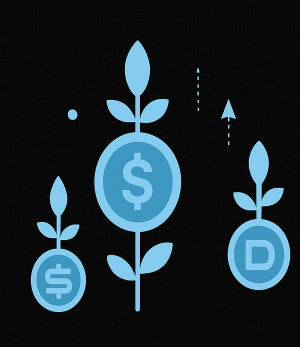
Yields 2025, Updates on Products and How to Keep Earning in Bear Markets
No strategy, no success! Cash now amigo!
Even in bearish market conditions, stablecoin-based yield strategies can continue to provide steady income. The key is to focus on reliable protocols, manage risk exposure, and maximize reward optimization tools. Below is a detailed update on some of the top-performing DAI-based yield opportunities for 2025, with a focus on how to sustain and enhance income streams when price appreciation is limited.
1. MakerDAO’s DAI Savings Rate (via Spark Protocol)
- Current APY: ~7.25% (peaked at ~11% in late 2024)
- Method: Deposit DAI directly into the DSR via the Spark Protocol interface.
- Rewards Angle: Pure staking — no LP or borrowing risk. This makes it a baseline “risk-controlled” option for stable yield. In bear markets, it’s an ideal core holding that steadily compounds rewards without exposure to volatile assets.
https://spark.fi/
2. Aave (Lending Protocol)
- Current APY Range: ~2%–14%+ depending on chain and demand.
- Chains Supported: Ethereum, Polygon, Arbitrum, Avalanche.
- Rewards Angle: Lend DAI to borrowers and earn interest plus potential liquidity mining incentives when available. Yields spike when borrowing demand rises — making it opportunistic in volatile conditions.
https://aave.com/
3. Curve Finance (Stablecoin Liquidity Pools)
- Current APY: Up to ~19.3% (including CRV rewards).
- Rewards Angle: In addition to swap fees from low-slippage pools, you earn CRV tokens, which can be sold or re-staked to compound gains. This dual-reward system helps offset lower swap volumes during bearish market periods.
https://www.curve.finance/dex/ethereum/pools/
4. Convex Finance (Curve Optimizer)
- Current APY: Up to ~30.4% for DAI-enabled Curve LP positions.
- Rewards Angle: Convex boosts CRV emissions for LP providers, turning a standard Curve yield into one of the highest stablecoin returns in DeFi. For income maximization, Convex remains the top DAI reward amplifier in 2025.
https://www.convexfinance.com/
5. Pendle (Tokenized Yield Strategies)
- Current APY: ~4%–16.3% depending on strategy.
- Rewards Angle: Tokenizes future yield into tradable assets, allowing you to lock in fixed yields or speculate on future interest rates. This can stabilize income when variable APYs drop, offering predictability during long bearish stretches.
https://www.pendle.finance/
6. Morpho (Efficiency Layer for Aave)
- Current APY: ~3%–12.6%.
- Rewards Angle: Optimizes DAI lending by directly matching lenders and borrowers for improved rates. Keeps yields competitive even when Aave’s base rates soften, and still benefits from Aave’s underlying reward mechanisms.
https://morpho.org/
Quick Reference Table
| Platform / Method | Approx. APY Range | Key Reward Notes |
|---|---|---|
| MakerDAO DSR (via Spark) | ~7.25% (up to 11%) | Pure staking, low risk |
| Aave (DeFi Lending) | ~2%–14%+ | Interest + incentives |
| Curve (Stablecoin LP) | up to ~19.3% | Fees + CRV rewards |
| Convex (Curve Optimizer) | up to ~30.4% | Boosted CRV rewards |
| Pendle (Tokenized Yields) | ~4%–16.3% | Lock in fixed yield |
| Morpho Blue (Aave Layer) | ~3%–12.6% | Improved lending rates |
In a bearish market, where capital appreciation is limited, the focus should be on consistent compounding of stable yields:
- Anchor with Low Risk Rewards: Keep a substantial allocation in MakerDAO DSR for stability.
- Layer in Mid Yield Protocols Use Aave and Morpho Blue to capture lending spikes without overexposing to volatility.
- Optimize Rewards with Boosters For advanced users, allocate a portion to Curve + Convex to significantly boost yield through reward tokens.
- Lock Predictable Returns In uncertain markets, Pendle’s fixed-yield approach can provide income certainty.
Yields in 2025 show that even in bear markets, DeFi offers strong reward opportunities for stablecoin holders. By balancing low-risk core positions with carefully managed high yield strategies, investors can continue to generate meaningful income, without relying on token price gains. The key is reward optimization, risk management, and continuous monitoring of protocol APYs.
